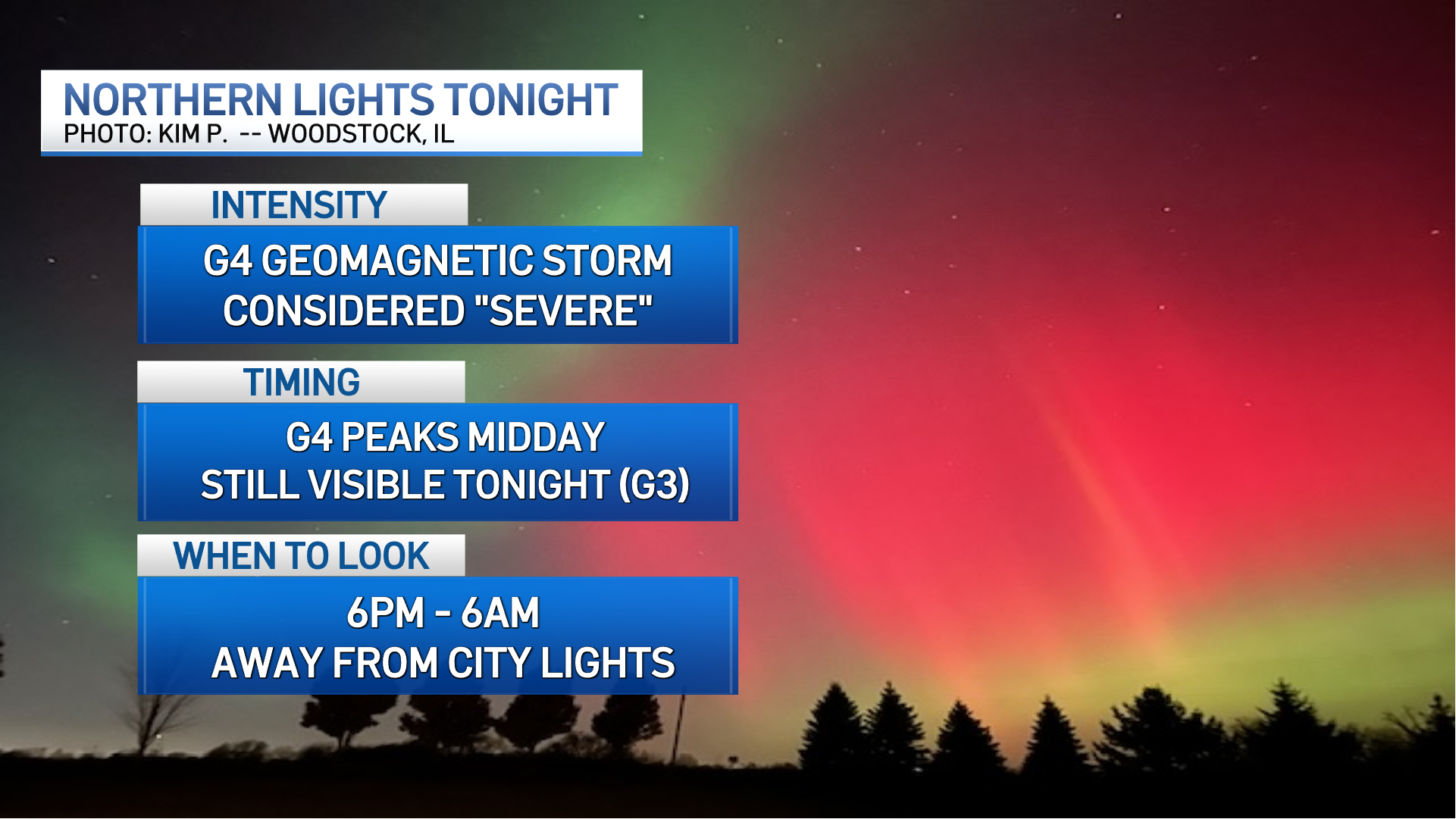Solar storms brought colorful auroras to Chicago-area skies Tuesday night and early Wednesday morning, and there could be more to come.
Over the past few days, the sun has burped out several bursts of energy called coronal mass ejections, or CMEs. Two have reached Earth, but at least one more is still on the way, which could lead to more chances to see the dazzle of the Northern Lights Wednesday.
“The CMEs that accompany [solar flares] really ignite the Aurora Borealis,” NBC 5 Storm Team Meteorologist Kevin Jeanes said. Although the sun had some CMEs this past week, the one from Tuesday was “moving stronger and faster,” leading it to interact with past ones.
“That’s the Cannibal CME,” Jeanes said.
Hours after photos and video captured the pink, green, yellow and purple hues from across the city and suburbs, they were still visible early Wednesday morning. NBC Chicago’s camera pointing east from New Trier High School in Winnetka captured the sight, and with the view visible through sunrise.
The show peaked Tuesday night, with a viewing line that cut across central Illinois and Indiana. Wednesday night’s viewing line, NBC 5 Storm Team Meteorologist Alicia Roman said, would be further north.
And, how bright the auroras are and how far south they are visible will depend on when the burst gets here, and how it interacts with Earth’s magnetic field and atmosphere.
Here’s what to know
What time can you see the Northern Lights in Illinois?
The latest forecast from NOAA’s Space Weather Prediction Center showed a spike in geomagnetic activity from 9 a.m. to noon Wednesday, when the stronger CME is expected to reach Earth. That means Wednesday’s geometric peak happens during daylight hours, but it’s still possible the Northern Lights will make another appearance in the evening, Roman said.
“They’ll peak later today midday,” Roman said. Wednesday night, you’ll still be able to catch them between 6 p.m. and 7 p.m., if you look away from city lights.

On the Geomagnetic storm impact scale, midday Wednesday, a “severe” (G4) Geomagnetic storm is likely. While they will be still visible tonight, the impact may drop to a G4, Roman said, which is still strong and visible to see.
“The best time to look will be from 6pm until 6am – and look away from city lights,” Roman said. “And unlike last night where we had clear skies, there may be a few clouds lingering overnight.”
What are the Northern Lights?
The Northern Lights are often visible after a solar flare and a Coronal Mass Ejection (CME). Tuesday saw the strongest solar flare of the year, NBC 5 Strom Team Meteorologist Jeanes said.
But solar storms can bring more than colorful lights to Earth.
When fast-moving particles and plasma slam into Earth’s magnetic field, they can temporarily disrupt the power grid. Space weather can also interfere with air traffic control radio and satellites in orbit. Severe storms are capable of scrambling other radio and GPS communications.
Around 7:20 p.m. Tuesday, Northern Lights were visible in the Chicago area, including in Chicago, Cary, Downers Grove, Gilberts, Wilmette and Wheaton.
The lights were also visible downstate in Stark County, just north of Peoria, and in Annawan.
Here’s a glimpse into what they looked like.

This story uses functionality that may not work in our app. Click here to open the story in your web browser.

Want more insights? Join Working Title - our career elevating newsletter and get the future of work delivered weekly.